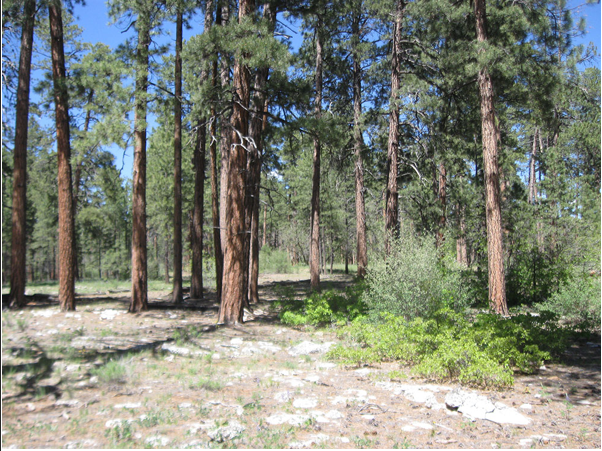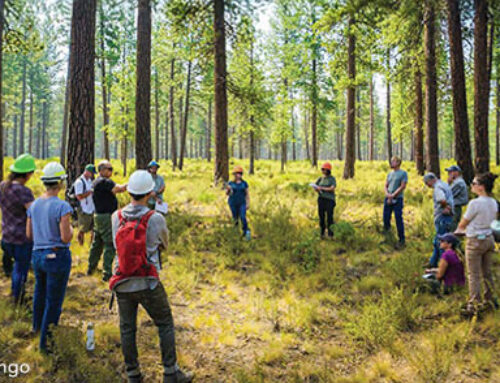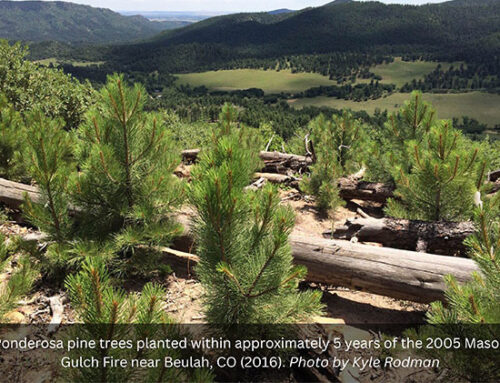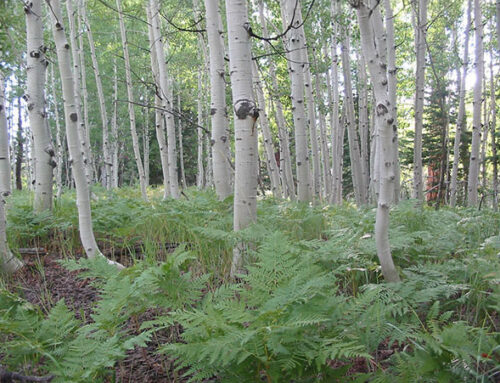To learn more about the effectiveness of managing wildfires to meet restoration goals, ecologists at the Ecological Restoration Institute have been working to better understand the ecological outcomes of wildfire applications and the conditions under which practitioners can expect beneficial results.
A new article in the International Journal of Wildland Fire contributes to this line of research. In the study, a team of ERI-NAU ecologists tested the long-term effects of managed wildfire on three different forest types (pine-oak, mixed-conifer, and spruce fir). The researchers analyzed data from a remeasurement of permanent monitoring plots on the North Rim of Grand Canyon National Park 12 years after three wildfires were allowed to burn to meet resource objectives in 2003. The ecologists evaluated fire outcomes and measured effects on forest structure and species composition.
Overall, the 2003 resource objective wildfires in Grand Canyon National Park achieved several beneficial management outcomes, but researchers say there is much more to learn about the effectiveness of wildfires at accomplishing restoration objectives and promoting resilient forest conditions, particularly in less-remote areas where human communities and other values at risk may necessitate a more cautious approach to managing fires.
Read the journal article and summary fact sheet.
.




